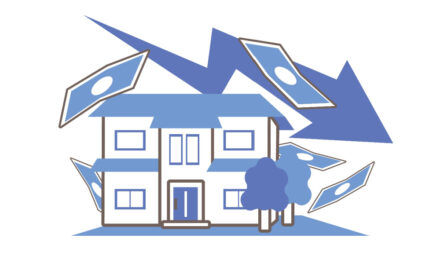Amortization is a powerful method for managing and repaying debt, whether it’s a mortgage, student loan, or personal loan. It offers a clear breakdown of your loan costs and helps track the growth of your equity over time. This guide offers a simple yet thorough overview of amortization—ideal for anyone considering a loan or looking to improve their financial literacy.
What Is Amortization?
Amortization refers to the process of paying off a loan through regular, scheduled payments. Each payment covers both principal (the amount you borrowed) and interest (the cost of borrowing). Over time, this structured repayment method gradually reduces your outstanding debt until the loan is fully paid off.
There are two main types of amortization:
- Loan Amortization: Applies to debts such as mortgages, auto loans, and personal loans.
- Asset Amortization: In accounting, this refers to spreading out the cost of intangible assets (like patents or software) over their useful life.
How Loan Amortization Works
Suppose you take out a $10,000 loan at a 6% annual interest rate over five years. Your lender will set fixed monthly payments. Each payment will include a portion for interest and a portion for reducing the loan principal.
Early in the loan term, a larger share of your payment goes toward interest. As you continue making payments, the interest portion decreases, and more of your money goes toward paying down the principal. By the end of the term, the loan is fully paid off. This predictable repayment pattern defines loan amortization.
Why Amortization Matters
Understanding how amortization works can give you an edge in managing debt and planning financially. Here’s why it’s important:
- Predictability for Budgeting
Fixed monthly payments make it easier to plan and stick to a budget. - Interest Savings
Paying extra early in the loan term reduces the total interest you’ll pay over the life of the loan. - Equity Building
With each payment, your debt shrinks and your ownership (especially in the case of a mortgage) grows. - Clear Loan Comparisons
An amortization schedule helps you compare different loans based on monthly payments and total interest. - Better Financial Planning
Knowing how your payments are structured helps you plan for the future more effectively. - Visual Progress
Amortization schedules show your debt decreasing over time, which can be highly motivating. - No Surprise Balances
Payments are spread evenly, so you won’t face large balloon payments at the end. - Improved Negotiating Power
You can ask smarter questions and understand the impact of loan terms when dealing with lenders. - Encourages Responsible Borrowing
Seeing the full cost of borrowing helps you make more informed, realistic financial decisions. - Supports Credit Health
Regular, on-time payments help build or maintain a strong credit history. - Focus on the Long Term
Amortization shifts your attention from short-term payments to the total cost of debt, promoting better decisions. - Flexible Repayment Strategies
A clear repayment plan allows you to customize your strategy, such as adding extra payments or switching to bi-weekly payments.
Tips for Managing Amortized Loans
Maximize your amortized loan benefits with these smart strategies:
- Make Extra Payments
Adding even $50 to your monthly payment can significantly reduce your interest and loan term. Always check for early repayment penalties first. - Switch to Bi-Weekly Payments
By paying every two weeks instead of monthly, you’ll make an extra payment each year—helping you pay off the loan faster. - Round Up Payments
Rounding your payment up to the nearest $10 or $100 applies more money to your principal, shortening your repayment period. - Refinance When Rates Drop
If interest rates fall, refinancing your loan could save you money and adjust your payment plan to better suit your goals. - Track Your Progress
Use amortization calculators or apps to monitor your progress. Seeing the numbers go down keeps you motivated. - Automate Payments
Set up automatic payments to avoid late fees and protect your credit. Some lenders may even offer rate discounts for enrolling in auto-pay.
Conclusion
Understanding amortization is key to taking control of your debt and improving your financial future. With this knowledge, you can make smarter loan choices, reduce interest costs, and manage your money more effectively. Whether you’re a first-time borrower or a seasoned one, mastering amortization empowers you to build wealth, eliminate debt, and create long-term financial security. Ultimately, amortization is more than just a repayment method—it’s a financial strategy for success.
Amortization is a powerful method for managing and repaying debt, whether it’s a mortgage, student loan, or personal loan. It offers a clear breakdown of your loan costs and helps track the growth of your equity over time. This guide offers a simple yet thorough overview of amortization—ideal for anyone considering a loan or looking to improve their financial literacy.
What Is Amortization?
Amortization refers to the process of paying off a loan through regular, scheduled payments. Each payment covers both principal (the amount you borrowed) and interest (the cost of borrowing). Over time, this structured repayment method gradually reduces your outstanding debt until the loan is fully paid off.
There are two main types of amortization:
- Loan Amortization: Applies to debts such as mortgages, auto loans, and personal loans.
- Asset Amortization: In accounting, this refers to spreading out the cost of intangible assets (like patents or software) over their useful life.
How Loan Amortization Works
Suppose you take out a $10,000 loan at a 6% annual interest rate over five years. Your lender will set fixed monthly payments. Each payment will include a portion for interest and a portion for reducing the loan principal.
Early in the loan term, a larger share of your payment goes toward interest. As you continue making payments, the interest portion decreases, and more of your money goes toward paying down the principal. By the end of the term, the loan is fully paid off. This predictable repayment pattern defines loan amortization.
Why Amortization Matters
Understanding how amortization works can give you an edge in managing debt and planning financially. Here’s why it’s important:
- Predictability for Budgeting
Fixed monthly payments make it easier to plan and stick to a budget. - Interest Savings
Paying extra early in the loan term reduces the total interest you’ll pay over the life of the loan. - Equity Building
With each payment, your debt shrinks and your ownership (especially in the case of a mortgage) grows. - Clear Loan Comparisons
An amortization schedule helps you compare different loans based on monthly payments and total interest. - Better Financial Planning
Knowing how your payments are structured helps you plan for the future more effectively. - Visual Progress
Amortization schedules show your debt decreasing over time, which can be highly motivating. - No Surprise Balances
Payments are spread evenly, so you won’t face large balloon payments at the end. - Improved Negotiating Power
You can ask smarter questions and understand the impact of loan terms when dealing with lenders. - Encourages Responsible Borrowing
Seeing the full cost of borrowing helps you make more informed, realistic financial decisions. - Supports Credit Health
Regular, on-time payments help build or maintain a strong credit history. - Focus on the Long Term
Amortization shifts your attention from short-term payments to the total cost of debt, promoting better decisions. - Flexible Repayment Strategies
A clear repayment plan allows you to customize your strategy, such as adding extra payments or switching to bi-weekly payments.
Tips for Managing Amortized Loans
Maximize your amortized loan benefits with these smart strategies:
- Make Extra Payments
Adding even $50 to your monthly payment can significantly reduce your interest and loan term. Always check for early repayment penalties first. - Switch to Bi-Weekly Payments
By paying every two weeks instead of monthly, you’ll make an extra payment each year—helping you pay off the loan faster. - Round Up Payments
Rounding your payment up to the nearest $10 or $100 applies more money to your principal, shortening your repayment period. - Refinance When Rates Drop
If interest rates fall, refinancing your loan could save you money and adjust your payment plan to better suit your goals. - Track Your Progress
Use amortization calculators or apps to monitor your progress. Seeing the numbers go down keeps you motivated. - Automate Payments
Set up automatic payments to avoid late fees and protect your credit. Some lenders may even offer rate discounts for enrolling in auto-pay.
Conclusion
Understanding amortization is key to taking control of your debt and improving your financial future. With this knowledge, you can make smarter loan choices, reduce interest costs, and manage your money more effectively. Whether you’re a first-time borrower or a seasoned one, mastering amortization empowers you to build wealth, eliminate debt, and create long-term financial security. Ultimately, amortization is more than just a repayment method—it’s a financial strategy for success.




